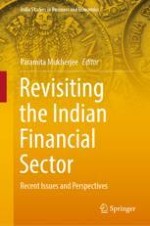2022 | OriginalPaper | Chapter
Global Monetary Policies and Implications for Financial Flows to India and Other Emerging Markets
Author : Sanket Mohapatra
Published in: Revisiting the Indian Financial Sector
Publisher: Springer Nature Singapore
Activate our intelligent search to find suitable subject content or patents.
Select sections of text to find matching patents with Artificial Intelligence. powered by
Select sections of text to find additional relevant content using AI-assisted search. powered by
